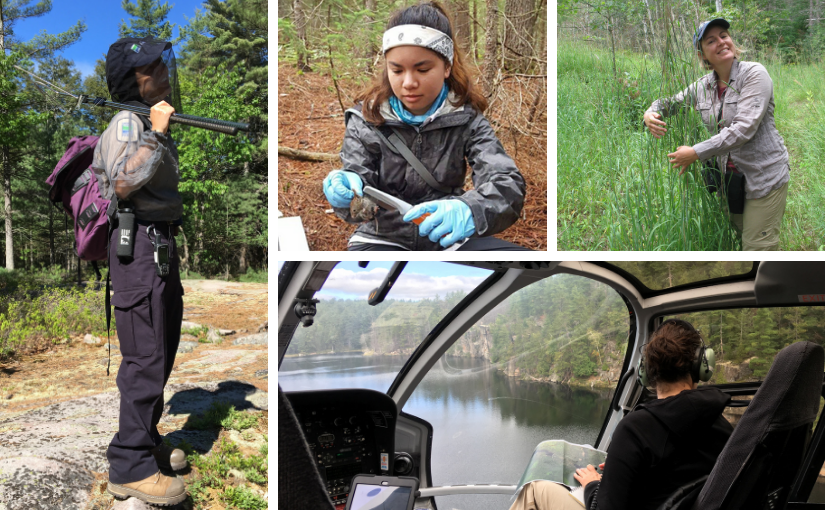Happy International Day of Women and Girls in Science!
Our female scientists are absolutely integral to Ontario Parks, working as researchers, biologists, ecologists, and more!
Take a look at a few of our awesome scientists:
Eugenie Au, Snake Researcher
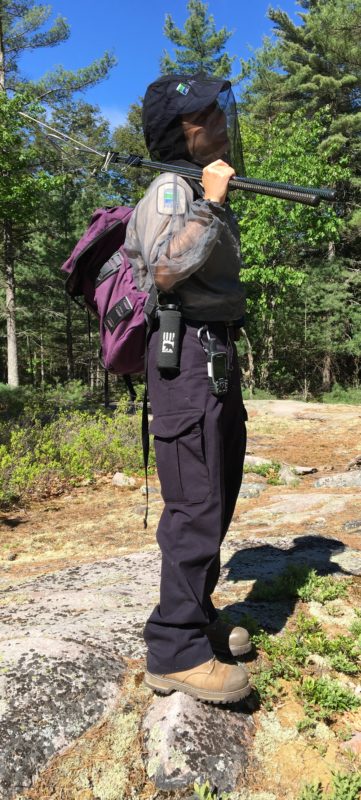 As a Snake Researcher, Eugenie spends her summers patrolling the rocky shoreline at Killbear Provincial Park, looking for the Eastern Massasauga Rattlesnake and Eastern Foxsnake.
As a Snake Researcher, Eugenie spends her summers patrolling the rocky shoreline at Killbear Provincial Park, looking for the Eastern Massasauga Rattlesnake and Eastern Foxsnake.
She plants a microchip in every snake caught in order to monitor the populations in the park.
Sometimes a lucky visitor is able to witness the process!
“Every snake has its own personality and story. I enjoy sharing it with the visitors and knowing they can walk away with a little more love for this “fearsome” species.”
Corina Brdar, Senior Zone Ecologist
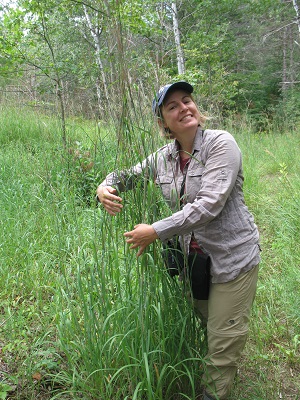
Corina loves using and sharing her ecological expertise to help protect and restore provincial parks.
“I get to research new topics and interact with experts from all areas of ecology every day. My work is very applied, but is based on the science done by academics and other government scientists.
“I’ve been doing this work since I finished grad school almost 20 years ago and hope to keep doing it until I retire.”
Morgan Hawkins, Biologist Intern
As a Biologist Intern, Morgan focuses on conducting wildlife research.

The information she collects aids in park management planning and the maintenance of ecological integrity.
“I love conducting science, particularly wildlife research, because it allows people insights into the unknown of nature and allows me to have an intimate relationship with the natural world.
“With Ontario Parks, I work on gathering as much information as I can about the plants and animals in our protected areas.
“In this photo, I am battling (and losing to) a swarm of mosquitoes in the backcountry as I set up an acoustic monitor. The monitor is set to pick up bat, amphibian and bird calls so we can better understand the species and population distributions on the landscape.
“The best part of my job is working outdoors with amazing people conducting projects that aid in important conservation efforts.”
Jasmine Veitch, AWRS Small Mammal Researcher
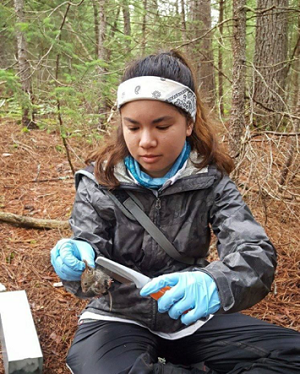
Jasmine works for the Algonquin Wildlife Research Station as a Graduate Student.
She is currently exploring the impacts of parasites on wild rodents to determine how parasites influence stress hormone levels in Algonquin Provincial Park.
“I have always had a passion for nature and biology, and working on the small mammal research project in Algonquin has allowed me to connect with the natural world.
“Getting the chance to spend every day exploring the outdoors provides a treasure trove of experiences that I would not otherwise have had the opportunity to encounter.”
Elizabeth Steadman, Piping Plover Monitor
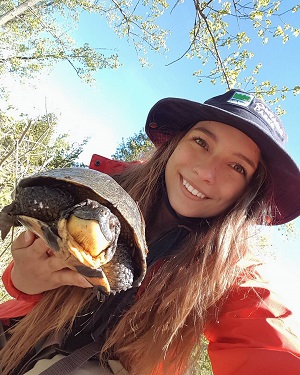
Elizabeth has spent three summer as the Piping Plover Monitor / Volunteer Coordinator at Presqu’ile Provincial Park.
During summers when the Piping Plovers nested elsewhere, she helped the with larger jobs such as:
- Monarch Butterfly counts
- cormorant surveys
- tree and turtle nursery work
- lots of other fun nature enrichment!
She continues working with Piping Plovers in Ontario, pursuing a Masters in Science at Trent University. She will be sampling 16 beaches throughout Ontario, trying to understand the amount of food available for the Piping Plovers, as well as other habitat features that drive them to nest at certain beaches.

“By far the coolest part of my job is learning about the connections found in nature. This may sound bizarre at first, but I have come to think of Piping Plovers as the tap-dancing penguin from Happy Feet, only they dance on the sand.
“Many shorebirds visit Ontario beaches to feed on invertebrates along the water’s edge, algae filled shorelines, driftwood filled wrack lines, and short vegetated dune areas. However, only some of them have adapted big round eyes, short bill lengths, and fast-moving feet to find invertebrates on or under the surface of the sand. Piping Plovers just happen to be one of the adapted shorebirds that can tap dance their way to full bellies—talk about dinner and a show!”
Park Biologist
This intrepid Park Biologist is tracking radio-collared wolves from a helicopter and surveying for Peregrine Falcons at the same time!

